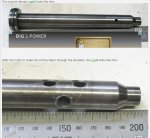For those who replaced the rear shock with an aftermarket shock, what did you do with the old shock? Mine is still sitting in the garage and it is time to do some house keeping. Has anyone tried to sell it? If so, how much?
Nothing with mine. Just stored in box. I don't think it has much value to anyone.

